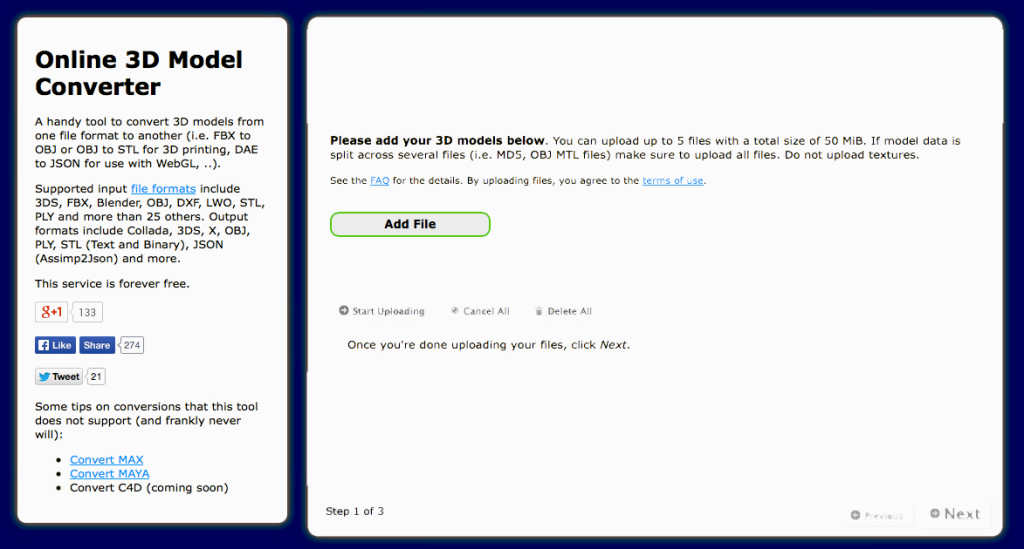Sometimes the most interesting insights come from the least likely places. Looking at Greentoken, an online app developed by 22 year old German computer science student Alexander Gessler, all I initially saw was a useful tool to quickly convert some forty plus 3D model formats into other formats, including STL and OBJ.
The truth is that knowing how many people are converting what into what and when is an incredibly powerful piece of information, especially in this case, since Gessler – a graphic software programmer – comes from the world of 3D modeling for video games. He and his partners also developed an Indy PC and Xbox 360 videogame, but this we will talk about later on.
“I wrote Greentoken a while back – says Gessler – as a way of making the Open Asset Import Library (Assimp) library we use for programming accessible to the online public. Assimp was kicked off with four contributors in 2008, since then we have grown and now more than 100 people have contributed code to it. Greentoken is a basic C++ system with PHP for the online front-end”.
“Recently I have noted that more and more people in the 3D printing online community recommend it as an easy way to get ancient (or not so ancient) files to STL for 3D print preprocessing”. This explosion in Greentoken’s traffic began about two years ago, which coincides with the beginning of the third boom of 3D printing, the prosumer boom, the biggest so far, after the industrial and the professional design ones.
What Gessler noticed is that the great majority of files are being converted to STL, and what is more, now – with no advertising or fancy graphics – Greentoken does about 1000 conversions a day. The maximum file size supported is 50 MB but for many 3D printed objects, it is enough.
What is particularly interesting is that – as mentioned above – this project directly related to 3D printing comes from the videogame developers community. As I have often written, I am surprised by the relatively slow adoption of 3D printing in video games. The projects can be counted on two hands and yet the videogame developer’s community is probably the largest – and definitely one of the most creative – 3D modeling communities out there.
At the same it seems to me that – after the mobile revolution – video games have ceased to evolve and have remained stuck inside the screen. 3D printing is the only way to “set them free” and when videogame designers become aware of that (which Greentoken seems to indicate is already happening) it will likely bring a further creative explosion in the world of 3D design.
In fact there are other signals this is happening: Oculus Rift is one. The biggest new invention used in video games (just like Kinect before it) will probably prove to be far more useful in other areas. For example, by creating a virtual 3D environment where to build and create new objects that can then be 3D printed into the real world.
Videogames are fun but are now a mature medium without great margins for growth. Gessler seems to agree with me. “Even in the Indy community – he says – there are five main genres and most games are variations of those. Blockbuster games have also just mostly introduced better graphics and more complex scenarios but nothing truly revolutionary”.
Recent (later denied) reports revealed Crytek – one of the largest and most talented software houses in the world – may be on the verge of bankruptcy. If that – or anything similar – happened, where would all that 3D modeling talent go? My own suspects are that it will get – rapidly – into 3D printing (which is currently still in part suffering from a limited number of truly talented and creative 3D modeling designers). That will happen soon.
“I too believe that this is going to happen – says Gessler – 3D models for games are not far away from 3D models for printing. For example they have similar restrictions such as, typically, a closed hull and not overly excessive detail. So 3D modellers currently specializing on games should be in their natural habitat and they will certainly follow the money”.
On the other hand, Gessler developed this tool just for fun, to do something useful and has no intention of changing it or charging for the service (other than Google’s ads and accepting donations for a version that lets you upload up to 100 50 MB files). “The servers are taken care of and they do not require very large resources,” he says, “I intend to continue working on it and keep adding new formats”.
Some of the best open source projects are born this way. In fact all the real open source projects are born this way. And sometimes they transform, magically, into a $400 million company. It’s the magic of 3D printing.




